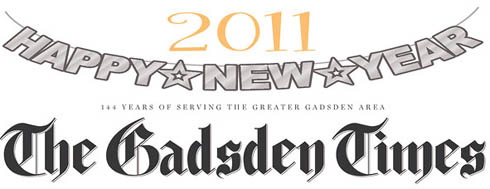Did your paper wish you a “Happy New Year” today? And if so, did your paper use fireworks, kazoos, streamers, vector art or photos?
A quick perusing of Newseum showed that all of the above was at work in the skyboxes this morning. A look at some of them:
———-
The Gadsden Times
Gadsden, Ala.
———-
The Huntsville Times
Huntsville, Ala.
———-
The Montgomery Advertiser
Montgomery, Ala.
———-
The Anchorage Daily News
Anchorage, Alaska
———-
The Sentinel-Record
Hot Springs, Ark.
———-
The Bakersfield Californian
Bakersfield, Calif.
———-
The Modesto Bee
Modesto, Calif.
———-
The Weekend Californian
Salinas, Calif.
———-
The Florida Times-Union
Jacksonville, Fla.
———-
The Pueblo Chieftain
Pueblo, Colo.
———-
The St. Petersburg Times
St. Petersburg, Fla.
———-
The Daytona Beach News-Journal
Daytona Beach, Fla.
———-
The Star-Advertiser
Honolulu, Hawaii
———-
West Hawaii Today
Kailua Kona, Hawaii
———-
The Detroit Free Press
Detroit, Mich.
———-
The Santa Fe New Mexican
Santa Fe, N.M.
———-
The Daily Reflector
Greenville, N.C.
———-
The Independent
Massillon, Ohio
———-
The Reading Eagle
Reading, Pa.
———-
The Pittsburgh Tribune-Review
Pittsburgh, Pa.
———-
The Virginian-Pilot
Norfolk, Va.
———-
The Salt Lake Tribune
Salt Lake City, Utah
———-
The Wisconsin State Journal
Madison, Wis.
———-
The Milwaukee Journal Sentinel
Milwaukee, Wis.
———-
Oshkosh, Northwestern
Oshkosh, Wis.
———-
The Wyoming Tribune-Eagle
Cheyenne, Wyo.
———-
These examples only represent some of the papers who incorporated “Happy New Year” into the paper’s nameplate. By no means is this an exhaustive list. Instead, it just represents the ones which caught my eye.



























